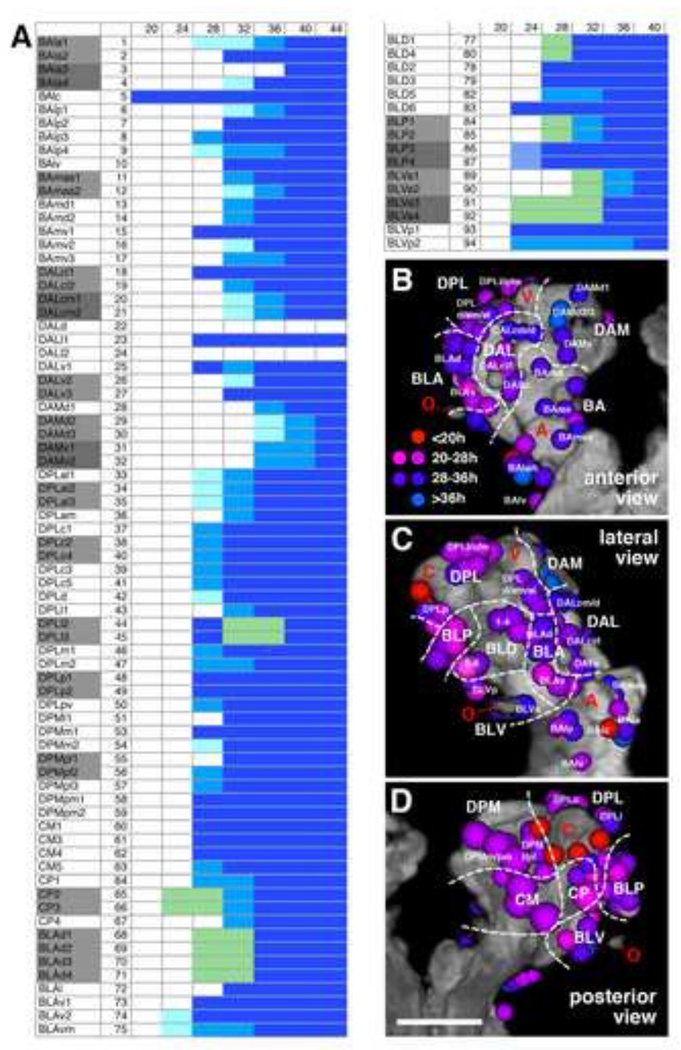Figure 4.
(A) Secondary lineage birthdates. All lineages are listed at the left; for lineage abbreviations in this panel and in panels (B–D), see Table 1 and Lovick et al. (2013). The horizontal axis represents the time axis, subdivided into 4h intervals. Numbers at the top indicate hours after hatching. Onset of blue shading indicates time interval at which the corresponding secondary lineage is ablated by HU pulse (dark blue = ablation in >90% of cases; medium blue = ablation in 50%–90%; light blue = ablation in 10–50%). Grey shading in left column points out lineage pairs with highly similar or identical axonal trajectory in larval brain. Green shading is applied in cases where one member of a lineage pair was consistently ablated in a high fraction of cases, whereas the other member was spared. For example, during a 20–24 or 24–28h interval, one lineage of the CP2/CP3 pair is ablated; due to the identical axonal trajectory of CP2 and CP3, it is not possible to determine which of the two was affected. (B–D): Correlation of birth date and location of a lineage. Digital three-dimensional models of larval brain hemispheres, showing position of neuropil entrypoints of lineages (colored spheres) in relationship to neuropil topography (gray). The neuropil surface model was generated by volume-rendering of a series of confocal sections of a brain hemisphere labeled with the synaptic marker nc82 (Brp; see Lovick et al., 2013). Four prominent elements of the neuropil surface are indicated in red lettering (A antennal lobe; C calyx; V tip of vertical lobe; O optic lobe). The three panels represent different view points (B: anterior; C: lateral; D: posterior). White hatched lines demarcate territories occupied by the different lineage groups that are annotated in white lettering (eg. BA, BLA). Coloring of a lineage indicates its birth date, based on time point when it was ablated by a 4h HU pulse. Color key (see panel B): red = birth date before 20h; magenta = birth date 20–28h; violet = birth date 28–36h; blue = birth date 36–44h. Scale bar: 50µm.

